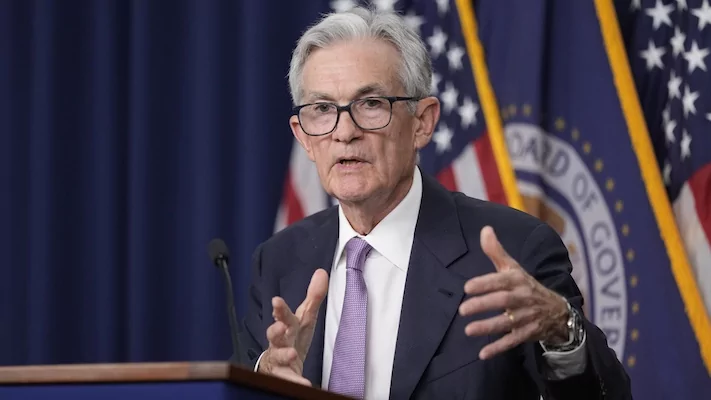
The Federal Reserve on Wednesday cut interest rates by a quarter of a percentage point, welcome news for consumers who have been struggling with higher rates.
After a two-day meeting of its monetary policy committee in Washington, D.C., the Fed announced it would move its rate target to 4.50% to 4.75%. Investors anticipated the move after the central bank’s bigger cut of half a percentage point at its September meeting.
The cut comes the same week that President-elect Donald Trump won the presidential election. Trump is inheriting an economy that has a relatively strong labor market but also shows signs of slowing. Economic output has also been strong, and while inflation is falling, there is still some lingering stickiness.
The Fed has signaled the cuts will continue gradually. The latest rate cut has also been anticipated given signals the labor market is weakening and general consumer pain with having interest rates so high.
Because inflation remained high in the first half of the year and even rose at some points, the timing for when the Fed would begin cutting interest rates has been consistently pushed back since the start of 2024. For a time, it appeared possible the central bank wouldn’t cut rates at all this year, although recent data showing inflation is falling have made that less likely.
The Fed’s goal is long-run 2% inflation, a level that is healthy for the economy and for consumers.
The most often cited inflation gauge for the public is the consumer price index. CPI inflation fell a tenth of a percentage point to 2.4% for the year in September, the Bureau of Labor Statistics reported, marking six months of disinflation. CPI inflation is now the lowest it has been since February 2021, shortly after President Joe Biden was sworn in.
But the Fed looks at another inflation gauge, the personal consumption expenditures index, when analyzing its next steps. The PCE index for September, which was released this week, showed PCE inflation falling to 2.1%.
Core PCE inflation, a measure of inflation that strips out volatile energy and food prices, remained at a 2.7% year-over-year rate.
Trump’s relationship with Fed Chairman Jerome Powell will also be something to watch. Powell, a Republican, was first nominated to lead the Fed by Trump, and Biden later renominated him.
Powell managed to garner support from Democrats because of his defense of the central bank’s independence during the Trump years and for his strong support for the pursuit of full employment. He and Trump were in open conflict over monetary policy.
While in office, Trump criticized Fed policy, blasting the central bank for raising interest rates too quickly. It was reported Trump had private discussions about firing Powell. Powell said at the time that he didn’t believe that Trump had the authority to fire him.
In 2019, Trump notoriously wrote that his “only question is, who is our biggest enemy” — Powell or Chinese leader Xi Jinping.
The last time that interest rates were cut the U.S. was in crisis. The stock market was in free fall, and the economy had fallen into a recession because of the pandemic. The Fed slashed rates to near-zero, holding them at that historically low level for two years until an explosion of inflation forced the central bank to begin hiking interest rates.
The Fed’s interest rate target affects all aspects of life. The higher interest rates have driven up mortgage rates and have put purchasing a home out of reach for many voters. They have also made taking on debt, such as for auto loans and credit cards, more expensive.
This latest cut is likely to provide some relief for voters, but it will only be marginal given that it will take some time for the Fed to keep bringing its interest rate target down.
The labor market proved remarkably resilient during the Fed’s period of historic tightening and had given the Fed insulation to keep interest rates high, although now there have been signs that the labor market is meaningfully softening, which has raised alarm bells and put further pressure on the central bank to cut rates.
The economy nearly stalled out in October, adding just 12,000 jobs, and the unemployment rate remained at 4.1%, the Bureau of Labor Statistics reported last week. Investors had expected job growth to slow to 108,000, in part because of damage from hurricanes and a strike at Boeing, but the report was even worse than expected.
Job openings, reported separately by the BLS, also recently fell to their lowest level since Biden was sworn into office, another indicator that the labor market is softening. Still, weekly jobless claims recently fell to their lowest level since May, according to the Labor Department, a sign that there is still some underlying strength in the labor market.
Despite the weaking jobs market, overall economic output, the main way that recessions are tracked, has remained strong and has even increased this year.
Gross domestic product growth, a measure of economic output, increased by 2.8% in the third quarter of this year. The news was released last week in the Bureau of Economic Analysis’s preliminary estimate.
CLICK HERE TO READ MORE FROM THE WASHINGTON EXAMINER
GDP growth has largely been positive during Biden’s time in office, although it contracted in the first two quarters of 2022, which at the time raised concerns that the U.S. would fall into a recession — but those fears never materialized.
The economy expanded at a 3% rate in the second quarter of this year and just 1.4% in the first quarter of 2024.
Discover more from reviewer4you.com
Subscribe to get the latest posts to your email.





